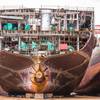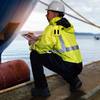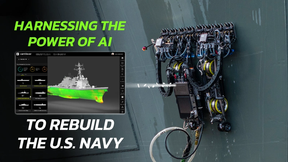BV Launches New Rules for Yachts, Megayachts
Bureau Veritas is launching a fully updated set of classification rules for yachts and megayachts. The Rules cover design approval, material and equipment certification and construction surveillance at the yard for single yacht building or for production in large series following an alternative survey scheme. Motor and sailing yachts of mono or multi hull type, built in steel, aluminium alloys or composite materials are covered. A major addition to the new Rules is a set of standards applicable to very large charter yachts and yachts with over 12 passengers. These standards bridge the gap between international conventions applying to passenger ships and yacht industry standards.
In addition to the classification of yachts, these Rules are also applicable within the scope of European Community certification for pleasure yachts ranging up to 24 m, with Bureau Veritas then acting as notified body.
The new Rules update BV’s 2006 Yacht Rules and incorporate feedback in service of yachts built to those rules. They also include additional class notations covering comfort on board, operation in ice and helicopter facilities. BV has also developed a specialised software package which is dedicated to the calculation of yacht structures built in composite materials, which is linked to the new Rules.
The new Rules also contain appropriate technical standards for large charter yachts over 500 UMS and/or yachts carrying passengers which fall into the category of passenger ships under International Conventions such as SOLAS. At present, there is a technical approach consensus in National Flag Regulations covering charter yachts over 500 UMS or charter yachts carrying less than twelve passengers. The regulatory environment becomes more difficult for charter yachts carrying more than twelve passengers. These yachts, engaged in trade, are covered by IMO Conventions and are to be considered as passenger vessels. These conventions, developed for passenger vessels carrying hundreds or thousands of passengers, are not easy to use for a yacht design. The new BV Rules develop a new set of requirements, close to the international conventions but customised to the yacht industry standards.
These requirements cover hull construction materials including the use of composite materials, stability criteria and damage stability, emergency sources of electricity power equipment and fire safety equipment. They are defined on the basis of SOLAS and Load Line conventions requirements for passenger ships carrying between twelve and thirty six passengers. The driving principle is to assist the designer and yard with an alternative approach as an equivalent basis to the international conventions. Bureau Veritas classification can speed the flag approval for each yacht project.
www.bureauveritas.com















